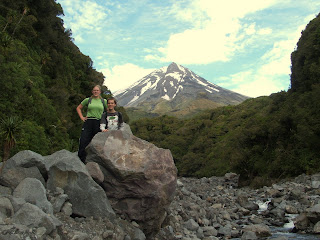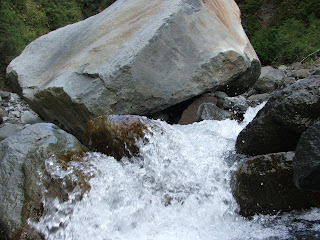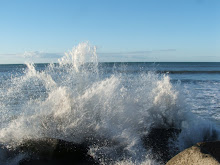I guess I should blog some pictures from our trip.But first, I just have to share......
Unless you are staying in a Hobbit cave, or a converted Bristol Freighter, or a palm frond cottage suspended over an azure tropical lagoon, overnight accommodation is just .... accommodation.A place to grab a shower after a long drive and sleep before your second day of travel..
Well, that was the plan anyway! Without too much research we accidentally ended up spending a night at quite the most soulful and fabulous stop that left us rested, revitalized and restored before the 'holiday proper' had even begun!
Shekinah is a farmstay backpackers less than an hour south of Auckland, New Zealand's biggest city. Well, to be truthful, neither 'farmstay' nor 'backpackers' does the place justice. To me farmstay conjures up retired couples and chintz sofas in spotless mock-rural 'band b' lifestyle suburbs. 'Backpackers' comes with its own baggage, usual damp rucksacks and grimy communal fridges. Neither was in evidence at Shekinah.
A short and scenic drive from the main road at Pokeno, the road narrows and tapers off to a gravel lane,, which in turn leads to a steep and simple driveway. We were greeted by the farm dogs as we pulled up, a mixture of eager young pups, seasoned sheep dogs and misty eyed house dogs with grey beards and long memories. It turned out that we were the only guests for the night.
Right from the start, we were welcomed like old friends, and shown to our cabin....simple and compact, but delightfully furnished, with its own veranda and coffee making facility. The view across the valley is nothing short of stunning on a fine day. The tuis in the pine trees break the silence with their jumbled songs.
There's a big lawn, landscaped into a grassy balcony, perfect for those with tents to pitch, and a deep grassy meadow for those in campervans. There are sheep in the gully, and calves in the top paddocks. Manx cats bask in the late afternoon sun.
The house philosophy is simple. It's an honest-to-goodness farmhouse, and all visitors are welcome, even encouraged, to use the kitchen and lounge. Run by Anita and Penny, the house is very much the hub for visitors, and we were treated more like family than backpackers. The kids were made welcome by the cats and dogs, and were inspired to sit and sketch as the shadows lengthened.
Meals are available by arrangement, but it's obvious that nobody would need to go hungry if they turned up unannounced. We'd already promised ourselves a few luxuries on this trip, and were treated to a very tasty barbecue which we shared with Penny and Anita as the sun set over the river below. We sat talking in the lounge until way after dark, despite the fact that Penny was due to start farm work before first light. After a long drive and a serene evening, sleep came quickly and easily in warm comfortable beds.
It was a delight to wake early, refreshed and relaxed. I felt comfortable and welcome as I wandered around, exploring. This is very much a 'working' farm,and the tangle of rural life stacks up in every corner. There are sheds and implements in various states of 'farm repair' and gates that invite you to the paddocks beyond. On the crest of the hill, perfectly positioned for sun and views is a handsome vintage bus, tastefully blanketed in a mural of New Zealand native ferns. It comes as no surprise that the bus was painted by an appreciative guest, and is available as sleeping quarters as an alternative to cabin or tent.


Our gracious hostess is awake bright and early, and keen to delight us further with her hospitality. We opt for a quick and simple breakfast, which sneakily turns itself into a leisurely feast. The sky seems three shades bluer, and the urgency of the long drive north slips lazily into irrelevance. I yearn for the days when things just happened on impulse, I could quite cheerfully trade the entire holiday for a week's easy touring, with this little patch of paradise as home base. As we say our farewells, we're already planning our next visit. This home in the hills has set the standard by which we will measure our overnight stops for a long time to come.Thanks, Anita and Penny!






















































